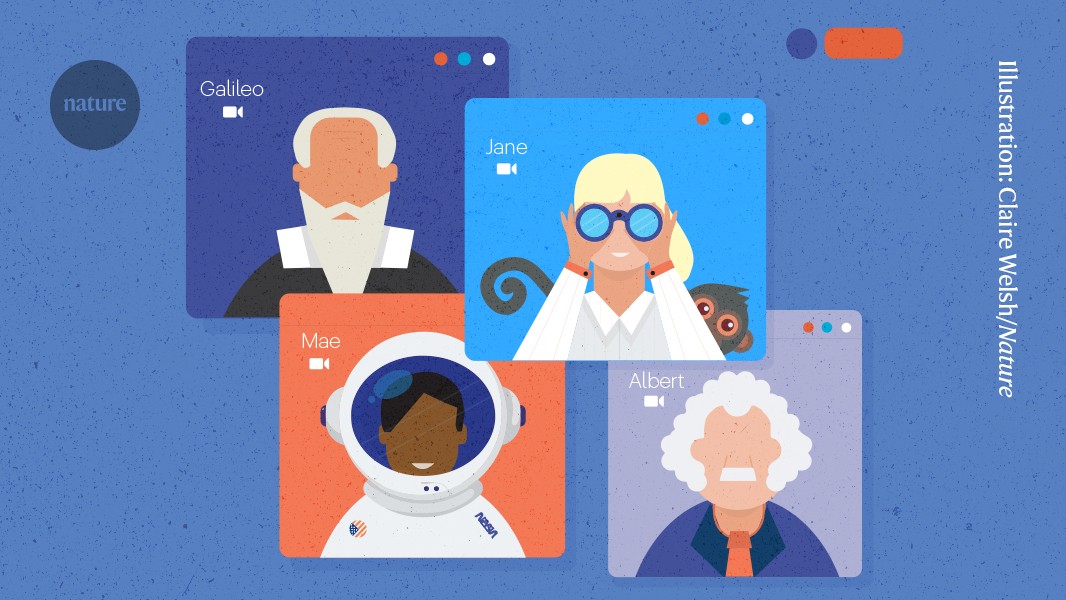How’s this for an academic dream team? Albert Einstein, Niels Bohr and Richard Feynman. The three physicists and I often get together over coffee to chat about career decisions, difficulties and dilemmas. Of course, not the real Einstein, Bohr and Feynman — the last of the trio to die was Feynman, in 1988 — but rather, simulations of the three that I have assembled, using artificial intelligence (AI), to serve as my personal advisory board.
AI is seemingly everywhere these days. It’s in productivity apps, web browsers and technical support lines. AI users increasingly report developing friendships, and even romantic relationships, with AI companions. I used the technology to develop an advisory board that can provide customized input into my career decisions and reflections. The resulting advice has been surprisingly useful — not to mention entertaining.
My board has provided advice on how to progress to my next career stage, how to contextualize my past and future work and how I might structure my next semester for maximum impact on my career. It also provided guidance when I received a job offer at a different university, helping me to see that accepting it might not be the best decision.
Although some people in corporate settings have proposed using AI to build a personal board of directors, I think the term ‘advisory board’ is more fitting, because the AI panellists are only advisers — they should not make decisions for you, and they cannot own the consequences of their decisions.
The make-up of my advisory board often changes, and has included an eclectic mix. Besides Bohr, Feynman and Einstein, I’ve also tapped microbiologist Alexander Fleming, poet Piet Hein and anti-apartheid activist Nelson Mandela. Sometimes I include experts from my specific disciplines of AI and marketing; other times, I ‘invite’ artist Pablo Picasso or architect Bjarke Ingels for a completely different perspective. But whatever the board’s composition, I typically retain a core group of three seminal scientists.
The make-up of the board influences not just what I might be told, but also the mood in the room. Picasso might push for an intuitive representation or metaphor, whereas Bohr tends to insist on complementarity and paradoxes. Different ‘personalities’ might dominate depending on the question — but, unlike with human discussions, you can often prompt your way out of any issues. You can, for example, prompt the AI to synthesize the board’s answers into a single coherent piece of advice, or to fuel ‘constructive conflict’ between members. As a result, I sometimes find myself acting more as a moderator than a passive recipient of information.
Build-a-board workshop
So, how do you build your own AI-generated board?
First, choose your favourite chatbot, such as ChatGPT (provided by OpenAI), Claude (Anthropic) or LeChat (Mistral AI). Choosing one that has some memory of your previous conversations can be helpful. My profile remembers that I’m an associate professor, as well as the specific challenges I face and my interests. As a result, I don’t have to start every conversation from scratch.
Next, prompt the AI to act like an academic advisory board. Here’s a prompt I might use to initiate an AI brainstorming session:
“Assemble an imaginary advisory board consisting of [INSERT PEOPLE HERE]. Have them discuss my current academic situation and give me contrasting, thought-provoking advice. End with a short synthesis that integrates their perspectives into one actionable insight.”
Of course, this is only a starting point. The real value lies in continuing the conversation.

Carsten Lund Pedersen.Credit: Carsten Lund Pedersen
You could also try presenting the board with a dilemma you’re facing and asking for input.
Finally, experiment and tinker with the make-up of your board. Try including different personalities, such as talk-show host Oprah Winfrey or author Stephen King. The sheer diversity can often reveal surprising perspectives on the challenges you face. For instance, in response to the generic prompt above, ‘Nelson Mandela’ reminded me that institutions often follow people of integrity, so I should focus on lifting other people up and ask whose lives will be improved if I succeed in my academic career.
Danger on board
There are, of course, pitfalls to consider when creating your own advisory board.
First, never outsource your decision-making. Use the technology to ‘open up the problem’ to perspectives that differ from your own, and, through this, to aid your own decision-making on a career-related matter. Because an AI can never take responsibility for its decisions (and might not have all the relevant information), you must always make the final decision yourself.


